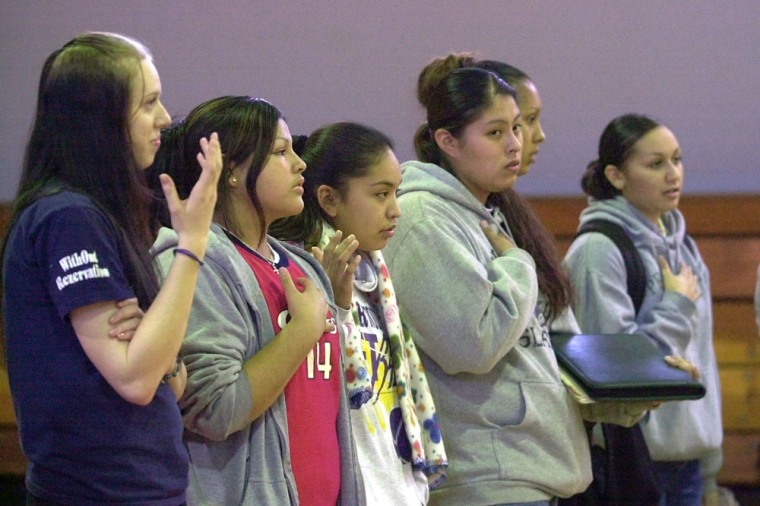There were no teachers in a room at the Nixyaawii Charter School, just a dozen or so teenagers gathered for their last class of the day.
Slouched low in their seats, baseball caps pulled down, they talked about how to behave in school.
“We have to learn how to govern ourselves,” said the group’s de facto leader, 20-year-old Jess Stone. “You guys are leading by example. You have to lead yourself before you lead others.”
In the first few months at Nixyaawii (pronounced Nick-yah-we), the group has emerged as a linchpin, helping to hold together a school on which the hopes of the Umatilla Indian Reservation rest.
Throughout Indian country, tribal officials are turning to charter schools as their best opportunity to reach a generation of Indian students who’ve dropped out or drifted through traditional public schools.
Charter schools receive public money, but are free from many of the rules and restrictions that apply to other public schools. The idea is to encourage experimentation in education.
The Washington, D.C.-based Center for Education Reform, which tracks charter schools, counts at least 30 Indian charter schools in the country. Arizona has the most, with 12, followed by California with six. Indian charters have also opened in Minnesota and Michigan.
Some have achieved results in a short time. The San Diego-area Barona Indian Charter School, for example, posted big gains in student performance on standardized test scores in the 2003-2004 school year, besting the state average.
But a tribal charter school was recently shut down after authorities had trouble with federal special education requirements and an audit, said Onnie Shekerjian, who sits on the Arizona State Board for charter schools.
Cultural curriculum
Still, more Indian charter schools are in the planning stages, including a school in Alaska. Besides the standard curriculum it would offer “hunting, harvesting, building canoes, berry-picking — all different activities to reinforce native culture,” said Sharon McConnell Gillis, executive director for the Doyon Foundation, one of the groups working on the proposal.
In Oregon, the idea for Nixyaawii had floated among the Confederated Tribes of the Umatilla Reservation for more than a decade before the tribe decided this year to seek charter status.
Principal Annie Tester was brought on board in July and hired her three teachers in August, only a month before the start of school, housed in a community center. Forty-eight students showed up for the first day of class.
Some come from high poverty families and have relatives who have battled with alcoholism and drugs, Tester said. Others have been tuning school out since junior high, one reason officials are hoping to eventually add seventh and eighth grades.
The school emphasizes Indian culture. Students learn traditional beadwork and basketry in art classes, discuss native fables in English and, instead of Spanish or German, are getting instruction in the almost-lost Indian languages spoken by their ancestors.
Teachers are trying to emphasize learning through group projects, rather than the more traditional method of a teacher lecturing while students take notes.
But teachers say there are too many times when students doze off in class, leave to get a drink of water and don’t come back, or turn in an assignment weeks late.
Work-in-progress
“We are doing a lot of unlearning before we learn,” said Tre Luna, who teaches social studies at Nixyaawii, his first full-time job.
Even some students say classroom behavior needs more work.
But Eddie Simpson, an 18-year-old born on the Coeur d’Alene, Idaho, reservation said he’s determined to get his remaining high school credits and graduate. He wants to train to be an EMT and sees Nixwaayii as his last, best chance.
“If I don’t do this, what’s there for me?” Simpson asked.
Tester and others said Nixyaawii’s first year is a work-in-progress. After this year, she said, staff will know where their students stand and where they need to improve.
At the start and end of each day, students and teachers gather in a circle for announcements and to talk about the day ahead or the day gone by.
There’s a perceptible weariness among students and teachers at the end of the day.
“Even with the chaos today, it was a good day,” teacher Luna told the students. “To those of you who had patience and stuck it out, thank you.”
